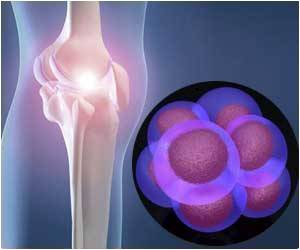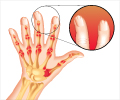Osteoarthritis can now be treated by bi-functional composite which imitates the complex osteochondral structure of a joint, i.e., both cartilage and bone tissues.

‘Made of several different substances - hydroxyapatite, gelatine, and chitosan - the bi-functional composite scaffold imitates the complex osteochondral structure and functionality of the joint’





According to the World Health Organisation, around 10% of male and 18% of the female population over 60 are suffering from osteoarthritis. The onset of the condition is associated with thinning of the cartilage due to age; on average, people over 55 feel pain in 4 joints. The most common in the world inflammatory bone and cartilage disease, osteoarthritis, generally affects the knee, hip, spine, and tarsus. While common treatment for osteoarthritis is pain or anti-inflammatory medication available as pills, syrups, creams or lotions, KTU chemists are offering a novel approach, i.e., using a bi-functional scaffold as an implant compensating cartilage and bone defects.
"A lot of people are suffering from painful joints, and the majority of them have osteoarthritis. To create new composites for solving this problem is especially challenging - cartilage tissue is renewing itself at a very slow rate, and it forms a complex structure together with a bone", says Simona Miseviciute, an applied chemistry undergraduate, who was conducting the experiment under the supervision of Dr Alisa Palaveniene.
The bi-functional scaffold, created at KTU aims to compensate for defects of both cartilage and bone. Made of several different substances - hydroxyapatite, gelatine, and chitosan - the scaffold imitates the complex osteochondral structure and functionality of the joint and fills the fractures of the two different tissues.
"Development of new scaffolds for regenerative engineering and implementing them in contemporary medicine is of utmost importance - to my knowledge, bi-functional scaffolds imitating complex osteochondral tissue currently are not used in medical practice," says Miseviciute.
Advertisement
The scaffolds were modeled by layering polymer combinations, and the porous structure of a scaffold was achieved by lyophilisation, i.e., freeze drying.
Advertisement
"To create bi-functional scaffolds for human bone engineering, interdisciplinary knowledge of chemistry, biology, pharmacy, anatomy is being used. The new research is aiming to solve the most urgent problems of today's aging society. Although these experiments are just a beginning of a great endeavor, we are happy to be keeping pace with global tendencies", says Dr. Palaveniene.
Source-Eurekalert















